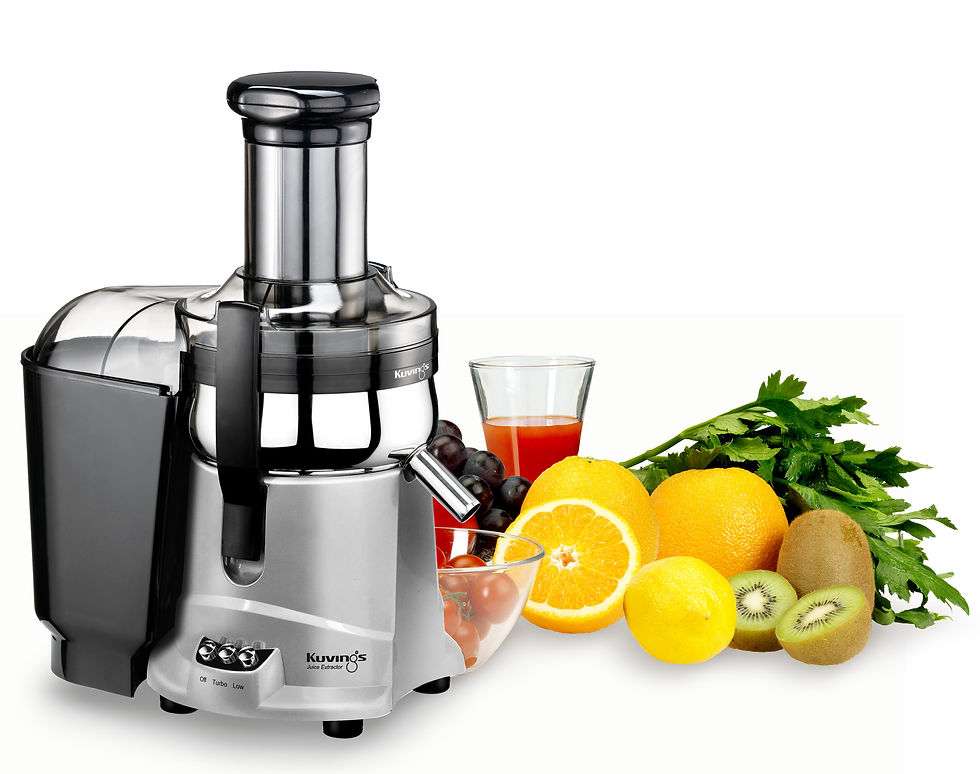The Basics of Juicing
- sandhillswellness
- Sep 17, 2015
- 3 min read
Many people who enjoy healthy eating, have taken an interest in juicing. This process of blending selected fruits and vegetables into a delicious and healthful beverage is an excellent way to satisfy one's daily recommended intake of fresh produce. It not only supplies the body with a powerful punch of nutrients, but is also convenient in that it can be bottled up and taken anywhere one goes.
There are many tasty fruits and veggies to choose from, each with their own valuable enzymes, anti-oxidants, phytochemicals, vitamins, and minerals. Research suggests that sufficient intake of these foods can help protect the body from numerous degenerative diseases, auto-immune disorders, viruses, and even some kinds of cancer. The useful substances found in fruits lend themselves to strengthening and regulating body processes.

A juice extractor is a machine designed to finely mince fruits and also vegetables in such a way that the juice is separated from the pulp. They come in two basic types; masticating and centrifugal. The former are fast and simple to use, while the latter provide a more thorough food processing action and yield a more richly flavored juice. Preparing fruits in this manner has several healthy advantages to the body. For one, it allows for faster absorption of nutrients since it is essentially converting the produce into a form that is more readily used by the body's cells. Unlike with solid food, there is no need to digest large pieces in order to extract nutrients. Another benefit of making juices is that it breaks down fiber that contains the bulk of the valuable nutrients. Normally this fiber is not digestible, meaning that one does not receive the maximum impact of the nutritional value. When made into juice, the body is able to fully benefit from practically all of these in numerous ways such as cleansing the blood. Produce that has been grown organically and not processed or combined with additives is by far the best for making juice. Pre-processing not only depletes vitamins, enzymes, and minerals, but it also adds potentially harmful chemicals. Raw fruit should be used; all that is needed to prepare it for the juicer is washing it thoroughly and cutting it into 1-inch cubes. It is best to loosely load fruit chunks into the juicer's loading chute rather than pack them

tightly, as this will permit more complete liquid extraction and ultimately more juice. After turning the machine on, the press should be applied steadily at an even pace to guide the pieces into the juicing blades. The solid pulp will collect in one spot and can be discarded, while the juice will pour from the dispensing chute. If not drank right away, it is
important to store juice in a tightly-sealed container in the refrigerator. One of the most enjoyable aspects of juicing (fruit) is the diversity of choices and never-ending number of tasty combinations that are possible. It is a good idea to begin with making one 8 ounce glass each day, which is better digested and processed by the body in the morning. Natural fruit juices are rather high in fructose and should not be consumed excessively by those who are diabetic or trying to control their weight. By using them as occasional dietary supplements they are a great way to meet nutritional requirements and boost one's immunity, and a much healthier option than bottled juices.













































Comments